Did you know that hippos are responsible for more human deaths in Africa than any other large animal? While these gentle giants might seem harmless, the truth is that they can be extremely dangerous. In this eye-opening article, we will unmask the dangers of hippopotamuses and reveal the untold truths about these seemingly docile creatures.
Hippos may appear slow and sluggish on land, but don't be fooled by their deceptive demeanor. They are surprisingly agile and can charge at speeds of up to 20 miles per hour. And with their massive size, weighing around 3,000 to 4,000 pounds, they have the power to crush anything that stands in their way.
Contrary to popular belief, hippos are not herbivores. They are classified as opportunistic omnivores and have been known to attack and consume other animals, including humans. This aggressive behavior, coupled with their territorial nature, makes encountering a hippo in the wild a potentially deadly situation.
So, join us as we delve into the untold truth of hippopotamuses and shed light on the risks associated with these seemingly innocent creatures. Prepare to be astonished by the startling facts about the world's deadliest herbivore.
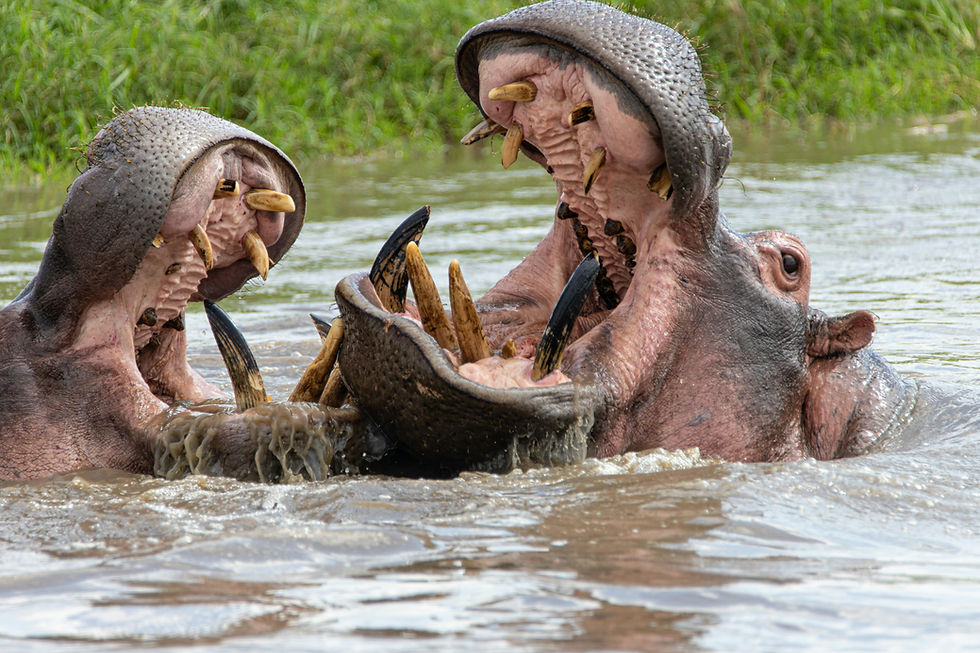
Physical characteristics of hippopotamuses
Hippopotamuses, often referred to as "hippos," are one of the largest land mammals in the world. These massive creatures can weigh up to 4,000 pounds and stand up to 5 feet tall at the shoulder. Their stocky, barrel-shaped bodies are supported by short, powerful legs, and their wide, gaping mouths are lined with sharp, curved teeth that can inflict devastating bites.
Despite their intimidating appearance, hippos are not built for speed on land. They can only reach a top speed of around 20 miles per hour, but their agility and maneuverability in the water are quite remarkable. Hippos are excellent swimmers and can hold their breath for up to 5 minutes, allowing them to submerge themselves in rivers and lakes to escape predators or keep cool during the heat of the day.
Another distinctive feature of hippopotamuses is their skin, which is thick and almost completely devoid of hair. This unique characteristic helps to protect them from the sun's intense rays and also serves as a natural defense mechanism against potential threats. However, their skin is also extremely sensitive, and hippos must frequently return to the water to keep it moist and prevent it from drying out and cracking.
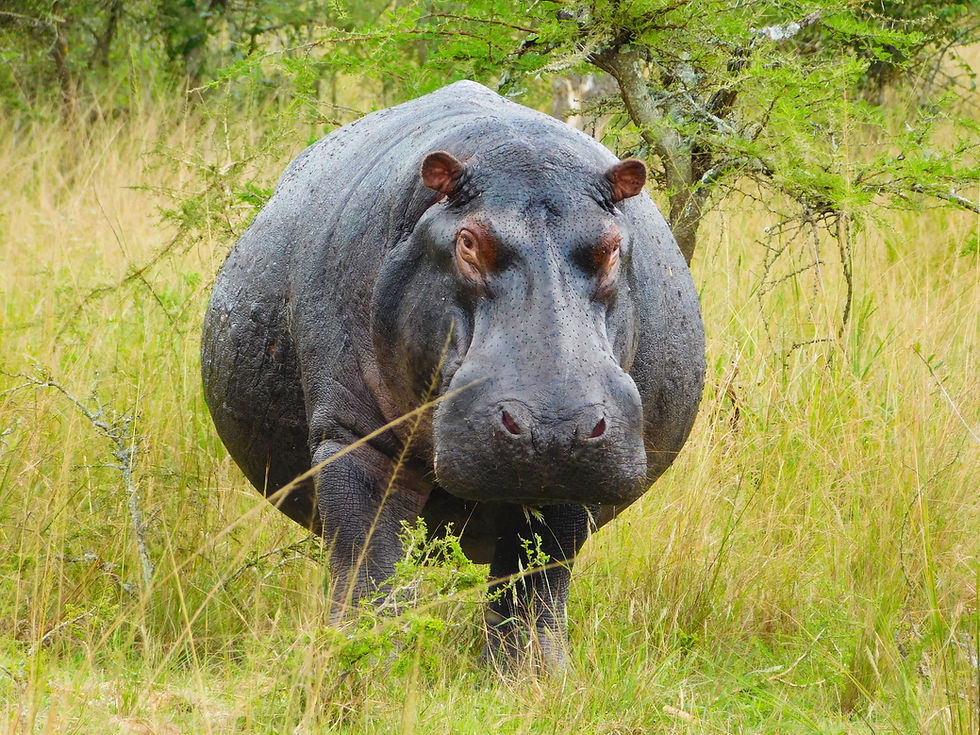
Habitat and behavior of hippopotamuses
Hippopotamuses are native to Africa and can be found in various regions, including sub-Saharan Africa, the Nile River basin, and parts of East and Southern Africa. These semi-aquatic creatures thrive in areas with ample access to freshwater bodies, such as rivers, lakes, and swamps, where they can spend much of their time submerged to regulate their body temperature and avoid the scorching heat.
When not in the water, hippos can be found grazing on land, primarily at night or in the early morning hours. Their diet consists primarily of grasses, aquatic plants, and other vegetation, and they can consume up to 80 pounds of food per day. Despite their herbivorous nature, hippos have been known to occasionally prey on other animals, including small mammals and even other hippos, particularly during times of resource scarcity or territorial disputes.
Hippopotamuses are highly social animals and often live in large groups called "herds" or "bloats," typically ranging from 10 to 30 individuals. These groups are typically led by a dominant male, known as the "bull," who is responsible for protecting the herd and ensuring its safety. Hippos are also known for their vocalizations, which include a range of grunts, bellows, and roars that they use to communicate with one another and assert their dominance within the group.
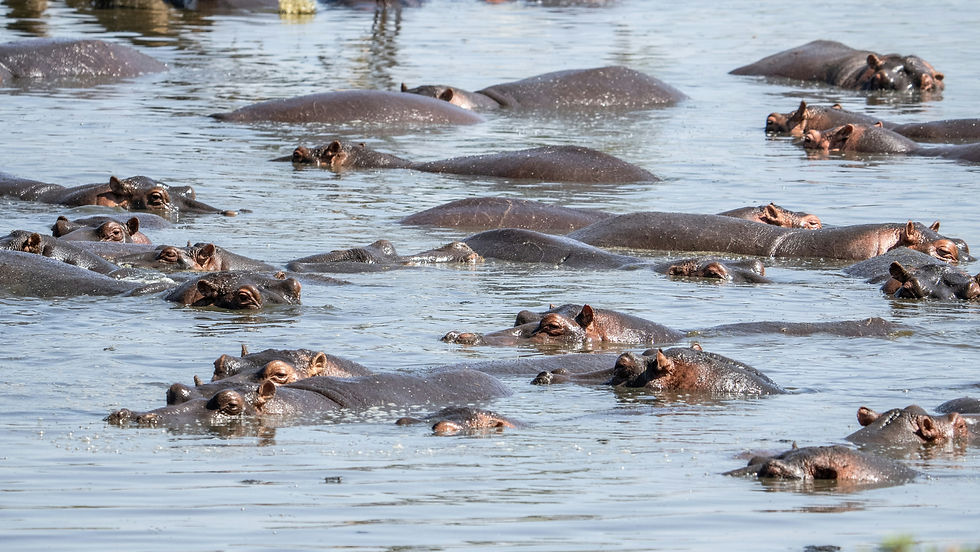
The dangers of encountering a hippopotamus in the wild
While hippopotamuses may appear to be gentle giants, they are, in fact, one of the most dangerous animals in Africa. These massive creatures are highly territorial and can be extremely aggressive, particularly when they feel threatened or when their young are in danger.
When confronted by a hippo, it is crucial to understand that these animals are not to be taken lightly. Hippos have been known to charge at intruders, including humans, with little provocation, and their powerful jaws and sharp teeth can inflict devastating injuries or even death. In fact, hippopotamuses are responsible for more human fatalities in Africa than any other large animal, including lions and crocodiles.
One of the most dangerous aspects of encountering a hippopotamus in the wild is their unpredictable behavior. Hippos can be calm and docile one moment and then suddenly become aggressive and violent the next, making it challenging for even experienced wildlife enthusiasts to anticipate their actions. Additionally, hippos are known to be highly protective of their territory and will not hesitate to defend it, even against much larger predators or human intruders.
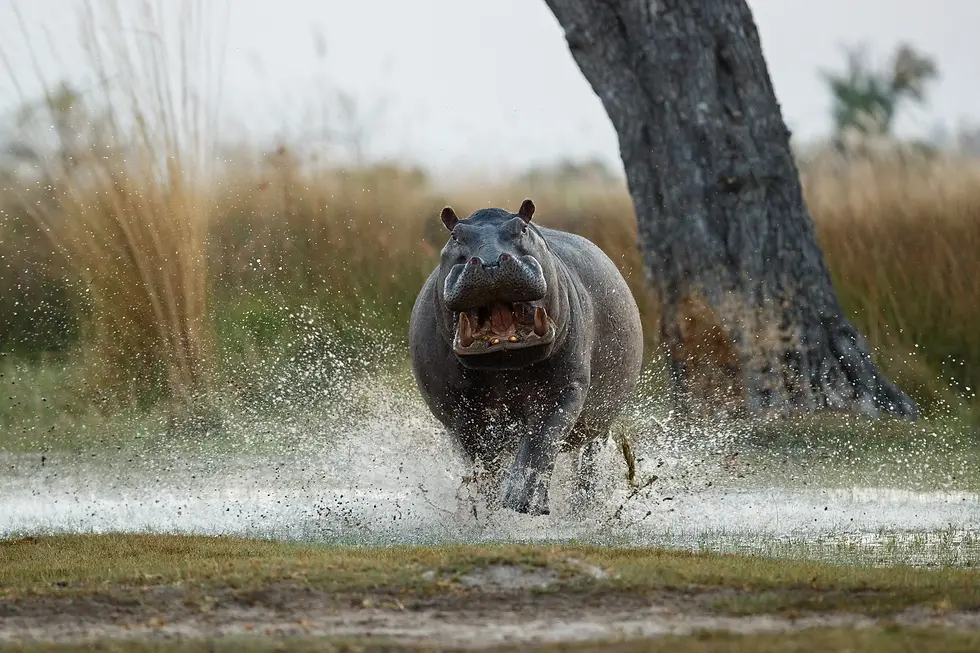
Hippopotamus attacks on humans: alarming statistics
The threat posed by hippopotamuses to human life is often underestimated, but the statistics tell a chilling story. According to the International Union for Conservation of Nature (IUCN), hippopotamuses are responsible for an estimated 500 human deaths per year in Africa, making them one of the deadliest large animals on the continent.
These attacks can occur for a variety of reasons, from hippos defending their territory to protecting their young or reacting to perceived threats. In many cases, the victims are unsuspecting individuals who accidentally stumble upon a hippo's domain, such as fishermen, farmers, or tourists. The sheer power and size of these animals mean that even a single bite or strike can be enough to cause fatal injuries.
Sadly, the true impact of hippopotamus attacks on human populations is likely much higher than the reported statistics, as many incidents go unrecorded, particularly in remote or underdeveloped areas.
Additionally, the fear and trauma experienced by survivors of these attacks can have lasting psychological and emotional effects, further highlighting the need to raise awareness about the dangers posed by these seemingly docile creatures.
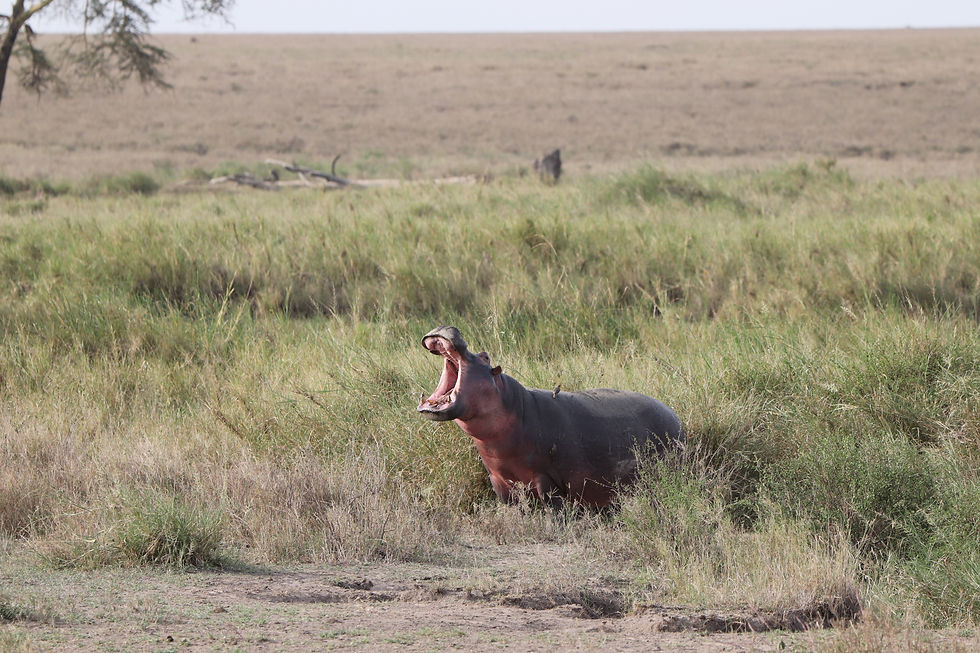
Understanding the territorial nature of hippopotamuses
Hippopotamuses are fiercely territorial animals, and their willingness to defend their domain is a key factor in the danger they pose to humans. These massive creatures are known to establish and vigorously defend their territory, which can include not only their immediate feeding and resting areas but also the waterways and surrounding land that they consider their own.
When a hippo perceives a threat to its territory, it will often respond with a series of aggressive displays, including loud vocalizations, head-bobbing, and even physical attacks. These confrontations can be triggered by a wide range of stimuli, from the presence of other hippos to the intrusion of humans or other animals into the hippo's domain.
Interestingly, the size and strength of a hippo's territory can vary depending on a variety of factors, including the availability of resources, the size of the herd, and the presence of other competing groups. In areas with abundant food and water, hippos may establish smaller, more localized territories, while in regions with scarce resources, they may claim and defend larger areas to ensure their survival.

Conservation efforts and the importance of protecting hippopotamuses
Despite the dangers they pose to humans, hippopotamuses play a vital role in the delicate ecosystem of Africa and are an important part of the continent's natural heritage. These animals are classified as "vulnerable" on the IUCN Red List of Threatened Species, with their populations declining due to a variety of threats, including habitat loss, poaching, and illegal hunting.
Conservation efforts aimed at protecting hippopotamuses and their habitats are crucial to ensuring the long-term survival of these iconic creatures. These efforts often involve a multi-pronged approach, including the establishment of protected areas, the enforcement of anti-poaching laws, and the promotion of sustainable tourism practices that prioritize the welfare of the animals.
In addition to their ecological importance, hippopotamuses also hold significant cultural and economic value for many African communities. These animals are revered in various traditional belief systems and are often depicted in art, music, and literature. Furthermore, the presence of hippopotamuses in a region can attract tourists, providing a valuable source of income for local economies and incentivizing the preservation of these animals and their habitats.

Safety precautions when visiting hippopotamus habitats
For those who wish to observe hippopotamuses in their natural environment, it is essential to exercise extreme caution and follow established safety protocols. These animals are unpredictable and can be incredibly dangerous, and even experienced wildlife enthusiasts should never underestimate the risks involved in encountering a hippo in the wild.
When visiting areas known to be inhabited by hippopotamuses, it is crucial to heed the advice of local guides and follow all safety instructions provided by park authorities or tour operators. This may include avoiding approaching too close to the animals, refraining from entering the water, and maintaining a safe distance at all times.
In addition to following safety guidelines, it is also important to be aware of the warning signs that a hippo may be becoming agitated or aggressive. These can include the animal's ears being pinned back, its tail being raised, or its mouth being open and showing its teeth. If any of these behaviors are observed, it is essential to back away slowly and avoid making any sudden movements that could be perceived as a threat.

Myths and misconceptions about hippopotamuses
Despite the wealth of information available about hippopotamuses, there are still many myths and misconceptions surrounding these formidable creatures. One of the most persistent myths is that hippopotamuses are herbivores, when in reality, they are classified as opportunistic omnivores and have been known to prey on other animals, including small mammals and even other hippos.
Another common misconception is that hippopotamuses are slow and lethargic on land. In reality, these animals are surprisingly agile and can charge at speeds of up to 20 miles per hour, making them a formidable adversary for any unsuspecting human or animal that crosses their path.
Additionally, some people believe that hippos are friendly and approachable, particularly when they are submerged in the water. However, this could not be further from the truth. Hippos are highly territorial and will not hesitate to attack perceived threats, regardless of whether they are in the water or on land. Approaching a hippo, even from a distance, can be an extremely dangerous and potentially life-threatening decision.
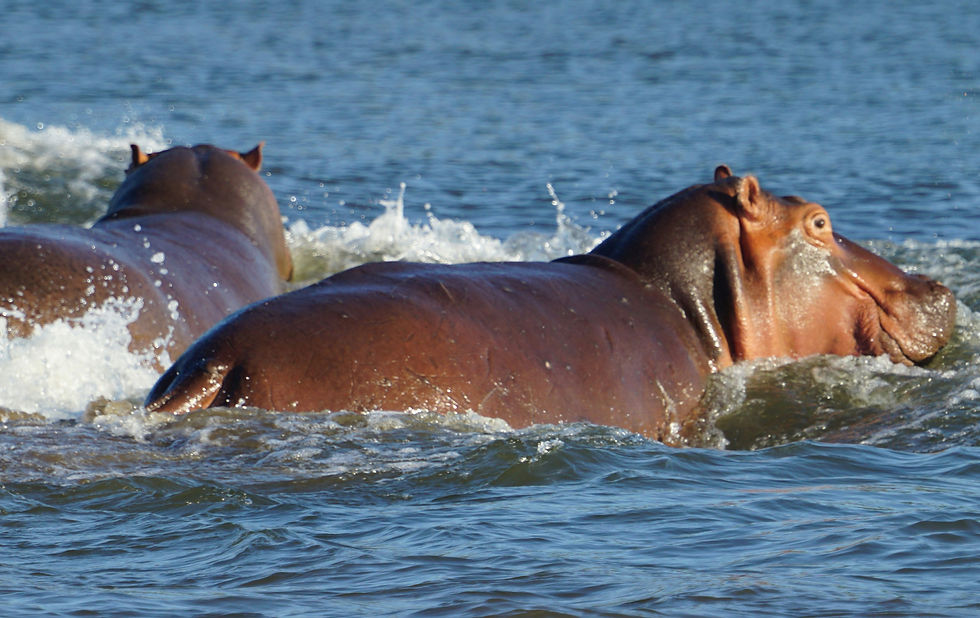
Conclusion: Promoting coexistence and respect for hippopotamuses
Hippopotamuses are undoubtedly one of the most fascinating and awe-inspiring creatures in the animal kingdom. However, their sheer size, power, and territorial nature also make them one of the most dangerous large animals in Africa, responsible for hundreds of human deaths each year.
As we continue to explore and appreciate the natural wonders of the African continent, it is crucial that we also develop a deeper understanding and respect for the delicate balance of the ecosystem and the animals that call it home. By educating ourselves and others about the true nature of hippopotamuses, we can work to promote coexistence and ensure the long-term survival of these majestic creatures, while also safeguarding the wellbeing of the human populations that share their habitat.
Through conservation efforts, responsible tourism practices, and a genuine appreciation for the role that hippopotamuses play in the broader ecosystem, we can work to bridge the gap between humans and these seemingly gentle giants. By doing so, we can not only protect these iconic animals but also ensure that future generations can continue to marvel at the wonders of the natural world and the incredible diversity of life that it sustains.

google seo…
03topgame 03topgame;
gamesimes gamesimes;
Fortune Tiger…
Fortune Tiger…
Fortune Tiger…
EPS Machine…
EPS Machine…
seo seo;
betwin betwin;
777 777;
slots slots;
Fortune Tiger…
seo优化 SEO优化;
bet bet;
google seo google seo技术飞机TG-cheng716051;
03topgame 03topgame
gamesimes gamesimes;
Fortune Tiger Fortune Tiger;
Fortune Tiger Slots Fortune Tiger…
Fortune Tiger Fortune Tiger;
EPS машины EPS машины;
Fortune Tiger Fortune Tiger;
EPS Machine EPS Cutting Machine;
EPS Machine EPS and EPP…
EPP Machine EPP Shape Moulding…
EPS Machine EPS and EPP…
EPTU Machine ETPU Moulding Machine
EPS Machine EPS Cutting Machine;
google 优化 seo技术+jingcheng-seo.com+秒收录;
Fortune Tiger Fortune Tiger;
Fortune Tiger Fortune Tiger;
Fortune Tiger Fortune Tiger;
Fortune Tiger Slots Fortune…
站群/ 站群
gamesimes gamesimes;
03topgame 03topgame
EPS Machine EPS Cutting…
EPS Machine EPS and…
EPP Machine EPP Shape…
Fortune Tiger Fortune Tiger;
betwin betwin;
777 777;
slots slots;
Fortune Tiger Fortune Tiger;
google seo…
03topgame 03topgame;
gamesimes gamesimes;
Fortune Tiger…
Fortune Tiger…
Fortune Tiger…
EPS Machine…
EPS Machine…
seo seo;
betwin betwin;
777 777;
slots slots;
Fortune Tiger…
seo优化 SEO优化;
bet bet;
google 优化 seo技术+jingcheng-seo.com+秒收录;
Fortune Tiger Fortune Tiger;
Fortune Tiger Fortune Tiger;
Fortune Tiger Fortune Tiger;
Fortune Tiger Slots Fortune…
站群/ 站群
gamesimes gamesimes;
03topgame 03topgame
EPS Machine EPS Cutting…
EPS Machine EPS and…
EPP Machine EPP Shape…
Fortune Tiger Fortune Tiger;
betwin betwin;
777 777;
slots slots;
Fortune Tiger Fortune Tiger;